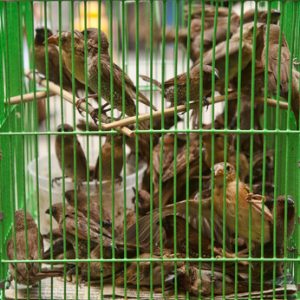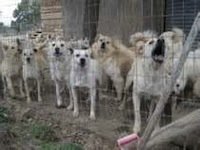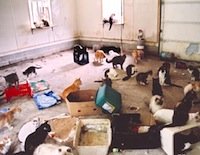Understanding Animal Hoarding
- The Animal Hoarding Course has been designed to assist those working in animal rescue to identify and respond to animal hoarding.
- Animal hoarding involves keeping higher than usual numbers of animals as companion animals without having the ability to properly house or care for them, while at the same time denying this inability.
- Over a quarter of a million animals fell victim to hoarding in the US last year. Those “collected” range in species from cats and dogs to reptiles, rodents, birds, exotics and even farm animals.
- Consequences of hoarding are long-lasting and continue to affect the animals even after they have been rescued and provided with better care.
- Early intervention is the key to preventing the suffering caused by animal hoarding.
*You will have access to the course for 6 months only, after which, you can purchase extensions.
Unit 1
Understanding animal hoarding
In this animal hoarding course unit, you will learn about the subject of animal hoarding and the types of animal hoarders. Gain an understanding of the relevance of language in reporting and combating animal hoarding. Learn how to create public awareness and education about animal hoarding for animal care professionals, in order to facilitate early intervention. Learn about current and recent hoarding reports.
Unit 2
Working with hoarders
In this animal hoarding course unit, you will learn how to work with hoarders. This module explores how to help hoarders to attain a manageable and healthy number of animals. Learn about the agencies and organisations involved in hoarding prevention and how they manage hoarding recurrence. Learn about the relationship between intervention strategies and hoarders. Evaluate reasons for the high recurrence of animal hoarding.

The Hoarding of Animals Research Consortium (HARC) which was set up in 1997 to better characterise the psychological and sociological underpinnings of animal hoarding; quantify the frequency and outcomes for animals, people, and communities; increase awareness; and develop improved strategies for intervention. In this animal hoarding course, you will learn that there are different types of animals hoarding, but all cases usually involved poor welfare and general neglect. HARC suggest that animal hoarding is defined by four characteristics:
• Failure to provide minimal standards of sanitation, space, nutrition, and veterinary care for the animals;
• Inability to recognise the effects of this failure on the welfare of the animals, human members of the household, and the environment;
• Obsessive attempts to accumulate or maintain a collection of animals in the face of progressively deteriorating conditions, and
• Denial or minimisation of problems and living conditions for people and animals.
Thousands of cases of animal hoarding are reported every year, in the US there are between 700 and 2000 new cases every year. As with many animal welfare issues, we can only combat hoarding with a multi-disciplinary and a multi-stakeholder approach. However, because the implications of animal hoarding for human health and welfare are not widely appreciated or recognised, these cases are unfortunately frequently left to animal shelters and humane societies to resolve through prosecution for cruelty to animals, rather than diagnosing for mental health.
Ignoring the multi-faceted nature of animal hoarding, this approach often fails, which results in a very high rate of re-offending, and due to the psychologically compulsive nature of animal hoarding, bans on keeping animals and limits to the number of animals are rarely effective at preventing the re-occurrence of hoarding. As with any form of intervention and management programmes, there are many techniques that need to be used in combination for successful intervention to occur in the long-term.
We offer a selection of accredited and employer recognised courses specifically designed for careers working with animals.
If you have any questions about our courses, please contact us.
We’ve assisted many people to achieve their goal to work with animals. Read more about our 5-star reviews and student success stories.
Gain relevant training to achieve your goal to work with animals.




